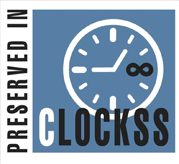Assessing the effectiveness of lead extraction in patients with implantable electronic devices: the largest retrospective study in Mexico
Ignacio Moreno-Zenteno, Department of Cardiology, Hospital Regional “Gral. Ignacio Zaragoza”, Mexico City, Mexico
Jose A. Manzanarez, Department of Electrocardiology and Arrhythmias, Instituto Nacional de Cardiologia “Ignacio Chávez, Juan Badiano”, Mexico City, Mexico
Diego Neach-De la Vega, Department of Electrocardiology and Arrhythmias, Instituto Nacional de Cardiologia “Ignacio Chávez, Juan Badiano”, Mexico City, Mexico
Adela Bazbaz, Department of Electrocardiology and Arrhythmias, Instituto Nacional de Cardiologia “Ignacio Chávez, Juan Badiano”, Mexico City, Mexico
Carmen A. Sánchez-Contreras, Department of Electrocardiology and Arrhythmias, Instituto Nacional de Cardiologia “Ignacio Chávez, Juan Badiano”, Mexico City, Mexico
Mario A. Ornelas-Casillas, Department of Electrocardiology and Arrhythmias, Instituto Nacional de Cardiologia “Ignacio Chávez, Juan Badiano”, Mexico City, Mexico
Sylvia Salmun-Nehmad, Department of Electrocardiology and Arrhythmias, Instituto Nacional de Cardiologia “Ignacio Chávez, Juan Badiano”, Mexico City, Mexico
Elías Terrazas-Cervantes, Department of Electrocardiology and Arrhythmias, Instituto Nacional de Cardiologia “Ignacio Chávez, Juan Badiano”, Mexico City, Mexico
Manlio F. Márquez-Murillo, Department of Electrocardiology and Arrhythmias, Instituto Nacional de Cardiologia “Ignacio Chávez, Juan Badiano”, Mexico City, Mexico
Moisés Levinstein-Jacinto, Department of Electrocardiology and Arrhythmias, Instituto Nacional de Cardiologia “Ignacio Chávez, Juan Badiano”, Mexico City, Mexico
Jorge R. Gómez-Flores, Department of Electrocardiology and Arrhythmias, Instituto Nacional de Cardiologia “Ignacio Chávez, Juan Badiano”, Mexico City, Mexico
Jose L. Morales-Velázquez, Department of Electrocardiology and Arrhythmias, Instituto Nacional de Cardiologia “Ignacio Chávez, Juan Badiano”, Mexico City, Mexico
Santiago Nava, Department of Electrocardiology and Arrhythmias, Instituto Nacional de Cardiologia “Ignacio Chávez, Juan Badiano”, Mexico City, Mexico
Background: The use of cardiac implantable electronic devices (CIEDs) has increased in the past decade and increasing of associated complications. While infection is the most common indication for lead extraction, other reasons also necessitate the procedure. Objective: Evaluate the outcomes of transvenous lead extraction (TLE) procedures conducted in tertiary referral hospitals in Mexico. Methods: This retrospective observational study included data from two centers in Mexico City, collected between November 2014 and October 2023. Patients who underwent TLE for indications related to pacemakers, implantable cardioverter-defibrillators (ICDs), or cardiac resynchronization therapy with defibrillator (CRT-D) were included. Primary outcomes assessed were procedure success rate, complications, and reasons for extraction. Results: The study analyzed 271 patients who underwent TLE, successfully removing 534 leads with an overall success rate of 97.4%. Major complications were reported in four patients. Conclusions: Transvenous lead extraction is a highly effective therapeutic approach with a high success rate and low complication incidence in a large patient cohort.
Keywords: Transvenous lead extraction. Rotating mechanical sheath. Femoral lead extraction.



